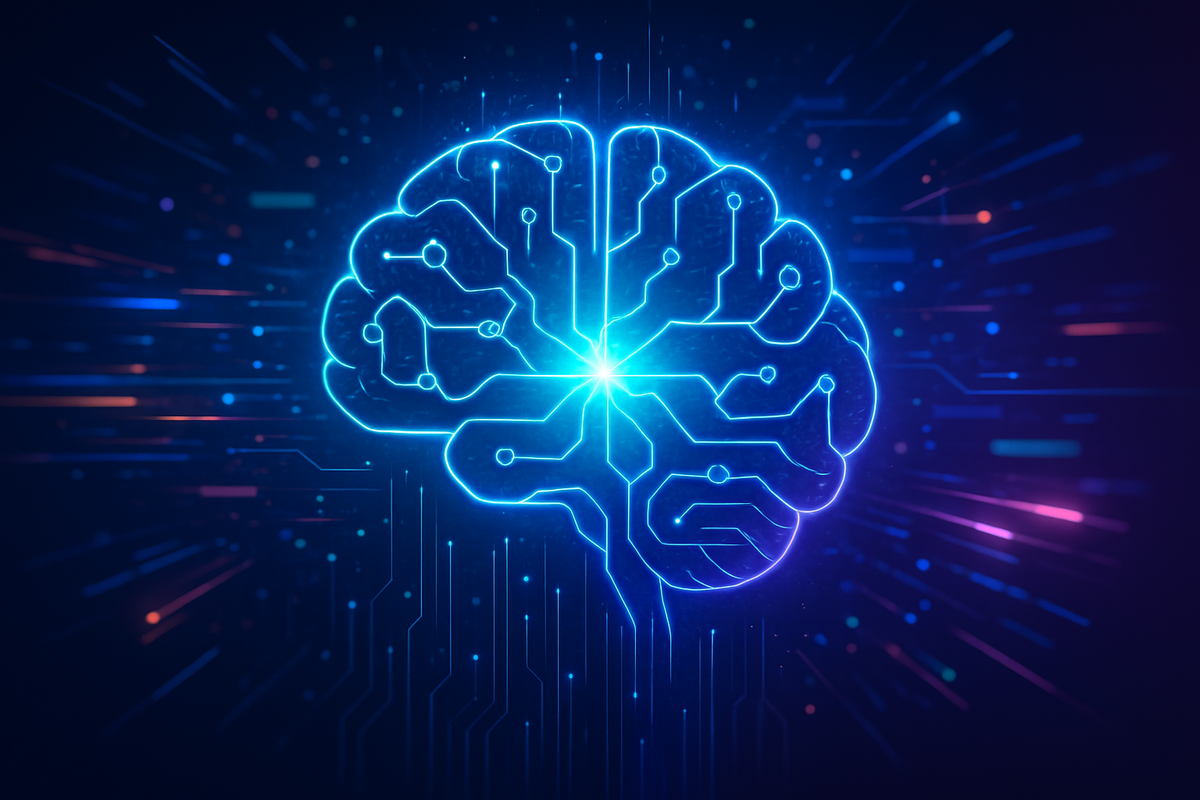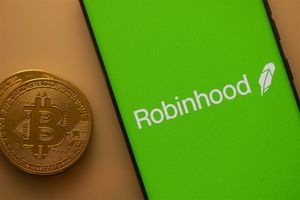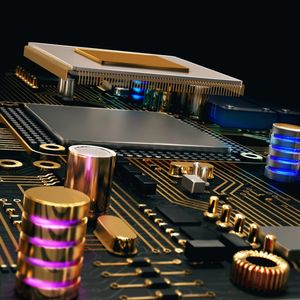
The artificial intelligence landscape is on the cusp of a monumental shift with the anticipated release of OpenAI's GPT-5 in August 2025. This next-generation model is poised to redefine the boundaries of AI capabilities, introducing features like unified intelligence, advanced reasoning, and true multimodality. Its arrival is set to dramatically intensify the already fierce competition among tech giants, forcing established players and emerging contenders alike to accelerate their innovation to keep pace.
GPT-5's Arrival: Redefining AI Capabilities and Market Dynamics
The impending launch of OpenAI's GPT-5 is not merely an incremental upgrade; it represents a significant leap forward in artificial intelligence, promising to reshape how humans interact with and leverage AI. This new iteration is expected to integrate all of OpenAI's diverse technologies—including text, images, video, reasoning, and task execution—into a single, seamless experience, a concept dubbed "unified intelligence." This eliminates the need for users to switch between specialized models, streamlining AI usability and opening up unprecedented possibilities for complex, multi-faceted applications.
Beyond unified intelligence, GPT-5 is rumored to boast substantially advanced reasoning capabilities, enabling it to tackle intricate, multi-step logic problems and planning tasks that have historically challenged even the most sophisticated AI models. OpenAI CEO Sam Altman has hinted at its impressive problem-solving prowess, with reports suggesting exceptional performance in demanding benchmarks. Furthermore, GPT-5 is expected to deliver true multimodality, moving beyond basic text and image processing to include native video understanding and generation. This would allow for seamless integration across text, image, and video workflows, revolutionizing content creation, educational tools, and marketing strategies. The model is also anticipated to feature an expanded context window, potentially supporting up to 1 million tokens for input and 100,000 tokens for output, allowing it to process vast datasets, entire books, or extensive documents in a single session. Moreover, GPT-5 is designed to be "agent-ready," meaning it can autonomously perform complex tasks like browsing websites, filling forms, sending emails, and utilizing various tools without explicit commands, acting as a "super assistant." OpenAI also plans to release specialized variants, including a "Lobster" version for software development and "mini" and "nano" versions optimized for real-time usage and deployment on mobile and edge devices.
The timeline leading up to this moment has been characterized by an accelerating "AI arms race," with major players continuously pushing the boundaries of what's possible. OpenAI, a key player in this race, has consistently set benchmarks with its GPT series, driving competitors to innovate rapidly. The anticipation surrounding GPT-5 has been building for months, fueled by leaks and strategic hints from OpenAI, creating a palpable sense of excitement and apprehension across the industry. Key stakeholders include not only OpenAI and its investors but also the myriad of businesses and developers who rely on large language models for their products and services, as well as the broader public who will experience the direct and indirect impacts of these advanced AI capabilities. Initial market reactions have been a mix of eager anticipation and strategic repositioning, as companies assess how GPT-5's capabilities will influence their own AI development roadmaps and competitive strategies.
The Shifting Sands: Who Wins and Who Loses in the GPT-5 Era
The release of GPT-5 is set to create distinct winners and losers in the intensely competitive AI market, forcing every major developer to re-evaluate their strategies. The most direct competition will be felt by established players who have invested heavily in their own foundational models.
Google's (NASDAQ: GOOGL) Gemini 2.5 Pro currently stands as a formidable competitor, boasting native multimodal understanding across text, audio, images, and video, including entire code repositories. Its impressive 1-million-token context window (with a 2-million-token capacity on the horizon) and strong performance in advanced reasoning, math, science, and coding set a high bar. GPT-5's unified intelligence and enhanced reasoning are directly aimed at surpassing or matching Gemini's capabilities, pushing both tech giants to accelerate their innovation cycles. While Google's generous free tier and automatic integration with current internet information provide a strong competitive offering, GPT-5's anticipated advancements will undoubtedly challenge its market position, particularly in enterprise solutions and complex autonomous tasks.
Alibaba's (NYSE: BABA) Qwen series, especially Qwen 2.5-Max, has made significant claims of outperforming OpenAI's GPT-4o, DeepSeek-V3, and Meta's Llama-3.1-405B in various benchmarks, including reasoning, coding, and structured data handling. Qwen's strong multilingual support (29 languages) and efficiency in handling long contexts make it a strong contender for global enterprise applications, particularly in Asian markets. GPT-5's broad improvements in reasoning and multimodality will directly challenge Qwen's performance in these critical areas, potentially impacting its competitive edge in the enterprise sector. Alibaba will need to continue its rapid development and potentially focus on niche applications or regional strengths to maintain its momentum.
DeepSeek, particularly its R2 and V3 models, has disrupted the AI industry with its cost-effective performance, excelling in complex tasks like advanced coding and high-level mathematical problem-solving. DeepSeek is also notable for being fully open-source, which fosters innovation and lowers barriers to entry for developers and startups. While GPT-5's specialized coding variant ("Lobster") and superior reasoning will directly compete with DeepSeek's strengths, DeepSeek's efficiency, affordability, and open-source nature will remain significant competitive advantages. DeepSeek may find itself in a strong position to cater to developers and organizations seeking powerful, customizable, and cost-effective AI solutions, potentially carving out a significant segment of the market that prioritizes open-source flexibility.
Meanwhile, Meta's (NASDAQ: META) 'Llama Behemoth' remains shrouded in mystery and has faced significant delays. Originally planned for an earlier release, the 288-billion-parameter large language model, with a total parameter count around 2 trillion, has seen its debut pushed back to fall 2025 or potentially later. Meta had previously claimed Behemoth would outperform models like GPT-4.5, Claude Sonnet 3.7, and Gemini 2.0 Pro on STEM benchmarks, even during its training phase. However, reports indicate internal struggles to improve its capabilities and concerns that its performance might not live up to earlier claims. Some sources even suggest Meta might abandon the project to focus on a closed-source model due to "poor internal performance." Despite the delays with Behemoth, Meta's broader Llama 4 series (Scout and Maverick) are open-weight models, aiming to democratize advanced AI development and offer powerful, cost-effective alternatives to closed-source models. The uncertainty surrounding Behemoth places Meta in a precarious position in the high-end model race, potentially losing ground to more agile and successful competitors like OpenAI and Google.
Industry Transformation and Broader Implications
The release of GPT-5 is not just a product launch; it's a catalyst for profound industry transformation, fitting squarely into the broader trend of accelerating AI capabilities and widespread adoption. This event will undoubtedly solidify AI's role as an indispensable tool across virtually all industries, from software development and education to big data analytics and creative content generation. The enhanced capabilities of GPT-5, particularly its agentic AI features, will drive an accelerated pace of innovation, leading to the development of more sophisticated AI solutions and entirely new applications that were previously unimaginable.
The potential ripple effects on competitors and partners are immense. Companies that have built their services on previous generations of AI models will need to rapidly adapt, either by integrating GPT-5 or by significantly enhancing their own proprietary models to remain competitive. This could lead to a wave of strategic partnerships, mergers, and acquisitions as companies seek to gain access to cutting-edge AI technology or specialized talent. For partners, the increased capabilities of GPT-5 could unlock new revenue streams and product offerings, but also necessitate significant re-tooling and upskilling. The emphasis on "agentic AI" and multi-agent systems, capable of autonomously executing complex workflows and collaborating to solve intricate problems, will become a dominant theme in AI development, pushing the industry towards more autonomous and intelligent systems.
Beyond the immediate industry impact, GPT-5's arrival will bring increased scrutiny to critical ethical considerations. As AI models become more powerful and autonomous, concerns around bias amplification, data privacy, and the potential for job displacement will intensify. Regulators and policymakers worldwide will face renewed pressure to develop comprehensive frameworks for AI governance, ensuring responsible development and deployment. This could lead to new legislation, industry standards, and international collaborations aimed at mitigating risks and maximizing the societal benefits of advanced AI. Historically, major technological leaps, such as the advent of the internet or mobile computing, have always been accompanied by similar periods of rapid innovation, market disruption, and evolving regulatory landscapes. GPT-5's release is poised to be another such inflection point, comparable to the introduction of the first widely accessible internet browsers or the iPhone, fundamentally altering how we interact with technology and the world around us.
What Comes Next: Navigating the Post-GPT-5 Landscape
The immediate aftermath of GPT-5's release will likely see a flurry of activity as developers and businesses scramble to integrate its capabilities into their products and services. In the short term, we can expect a rapid proliferation of new AI-powered applications that leverage GPT-5's unified intelligence, advanced reasoning, and true multimodality. This will manifest in more sophisticated chatbots, highly intelligent content creation tools, advanced coding assistants, and more intuitive user interfaces across various platforms. Companies that quickly and effectively integrate GPT-5 will gain a significant competitive advantage, potentially leading to shifts in market share and the emergence of new industry leaders.
In the long term, the impact of GPT-5 will necessitate strategic pivots and adaptations across the entire tech ecosystem. AI developers will be compelled to push the boundaries even further, exploring novel architectures and training methodologies to surpass GPT-5's benchmarks. This could lead to a renewed focus on specialized AI models, hybrid AI systems combining different approaches, or even entirely new paradigms of artificial general intelligence. For businesses, the challenge will be to identify and capitalize on the market opportunities that emerge from these advanced AI capabilities. This includes developing innovative business models, re-imagining customer experiences, and optimizing operational efficiencies through AI automation. Conversely, companies that fail to adapt risk obsolescence, as their offerings may be outmatched by more intelligent and efficient AI-driven solutions.
Potential scenarios and outcomes include a further consolidation of the AI market around a few dominant players, or conversely, a democratization of AI as open-source alternatives continue to improve and offer viable competition. We might also see a greater emphasis on "AI ethics by design," with companies prioritizing fairness, transparency, and accountability in their AI systems from the outset. The regulatory environment will undoubtedly evolve, potentially leading to more stringent guidelines for AI development and deployment, particularly concerning data privacy, intellectual property, and the societal impact of autonomous AI agents. The next few years will be a period of intense innovation, strategic maneuvering, and ethical deliberation, all shaped by the transformative power of models like GPT-5.
Conclusion: A New Horizon for Artificial Intelligence
The anticipated release of OpenAI's GPT-5 marks a pivotal moment in the evolution of artificial intelligence, promising to usher in an era of unprecedented capabilities and intensified competition. The model's rumored features—unified intelligence, advanced reasoning, true multimodality, and agentic capabilities—are set to redefine the benchmarks for AI performance, pushing the entire industry forward at an accelerated pace. This event underscores the ongoing "AI arms race," where innovation is not just a competitive advantage but a necessity for survival.
Moving forward, the market will be characterized by rapid adaptation and strategic repositioning. Companies like Google (NASDAQ: GOOGL), Alibaba (NYSE: BABA), and DeepSeek will continue to innovate fiercely, either by directly competing with OpenAI's offerings or by carving out specialized niches where their unique strengths can thrive. The uncertainty surrounding Meta's (NASDAQ: META) 'Llama Behemoth' highlights the high stakes and challenges inherent in developing cutting-edge AI. The broader implications extend beyond market dynamics, touching upon ethical considerations, regulatory frameworks, and the very nature of human-computer interaction.
Investors should closely watch several key indicators in the coming months. These include the actual performance benchmarks of GPT-5 upon its release, the speed and effectiveness with which competitors respond with their own advancements, and the evolving regulatory landscape. Furthermore, attention should be paid to the adoption rates of GPT-5 and competing models across various industries, as this will signal which applications and sectors are most profoundly impacted. The long-term significance of GPT-5 lies not just in its immediate capabilities, but in its potential to catalyze a new wave of innovation, fundamentally reshaping industries, creating new economic opportunities, and challenging our understanding of intelligence itself. The journey into this new AI horizon promises to be both exhilarating and transformative.





